



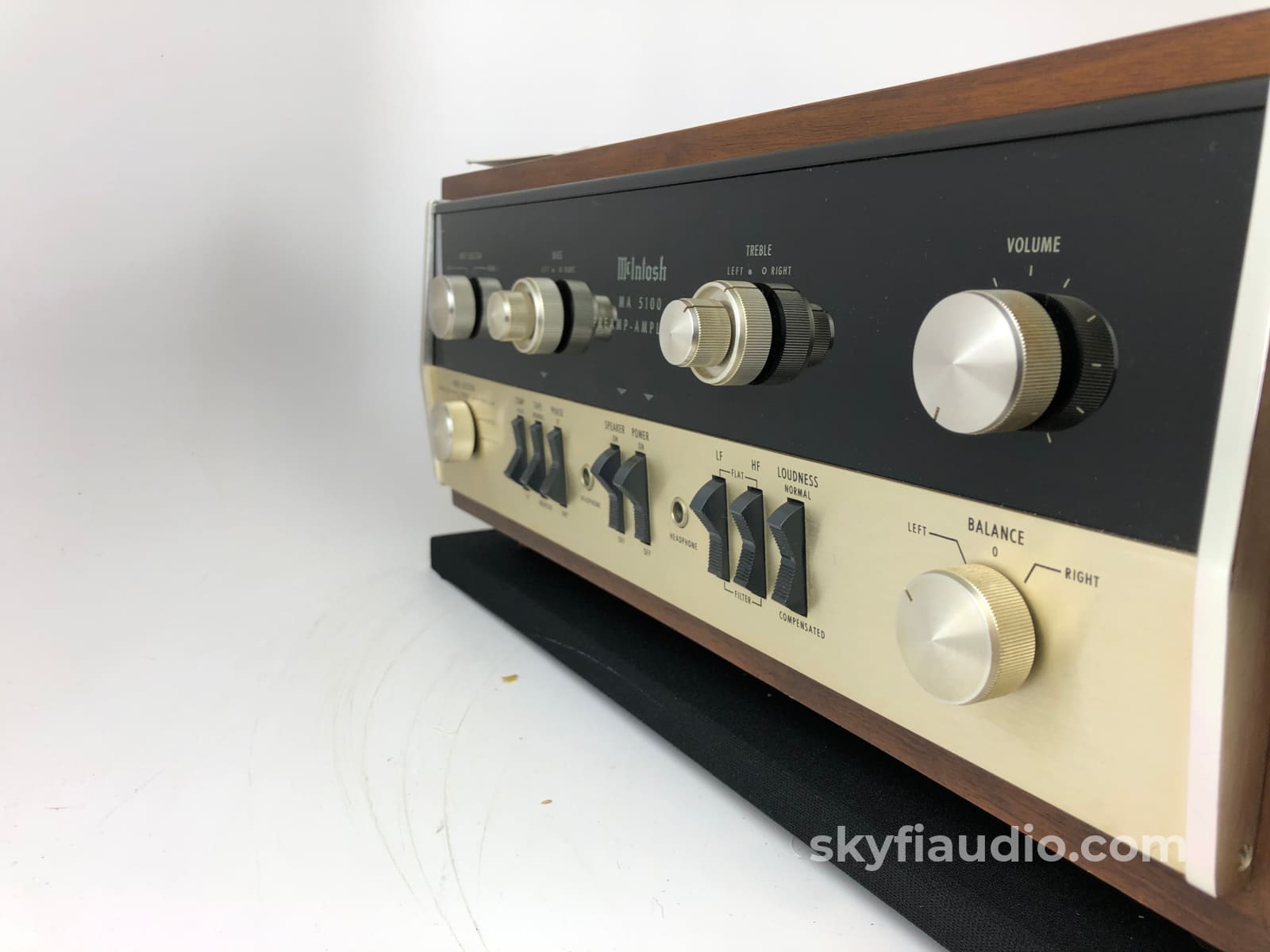
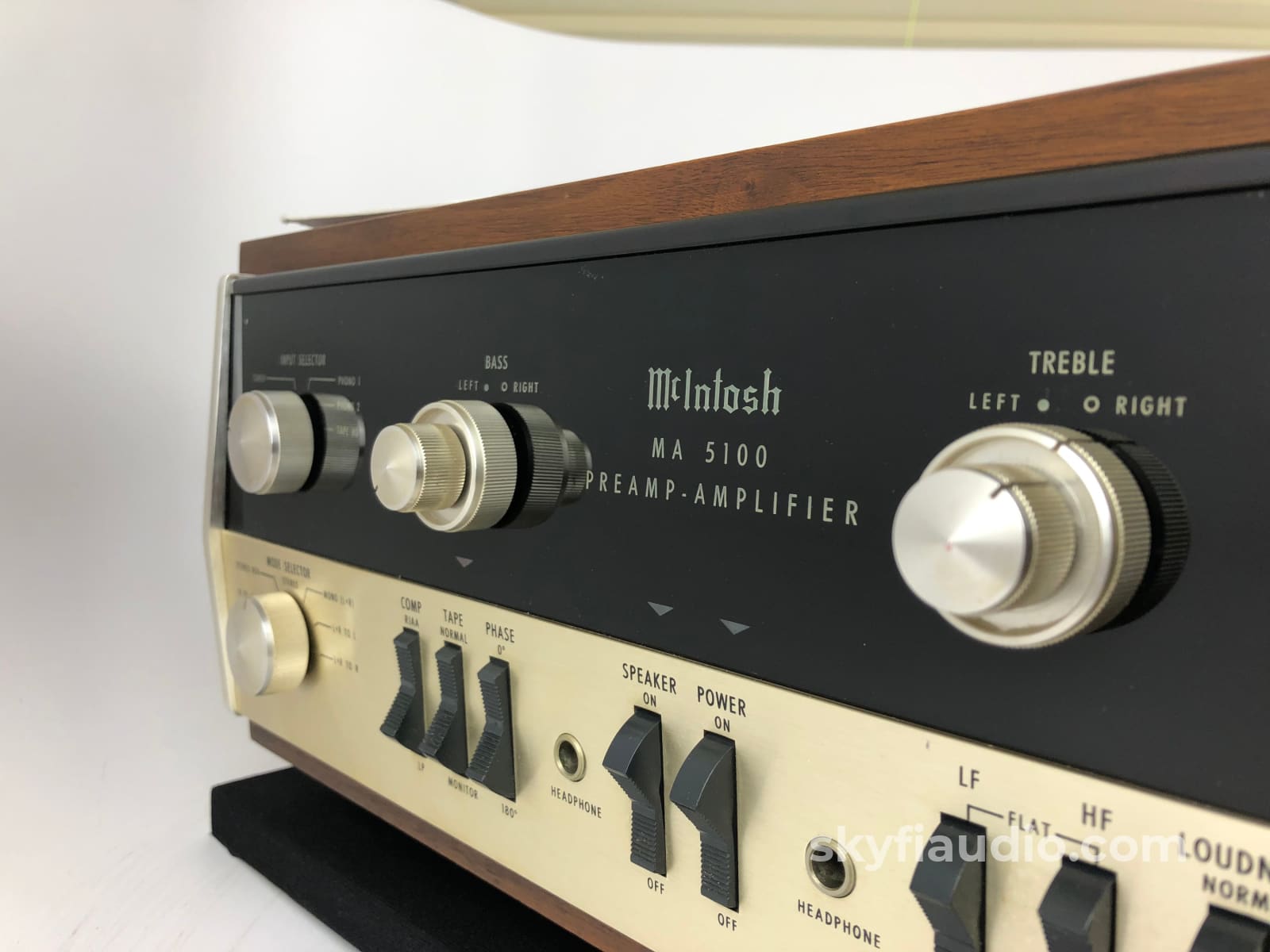
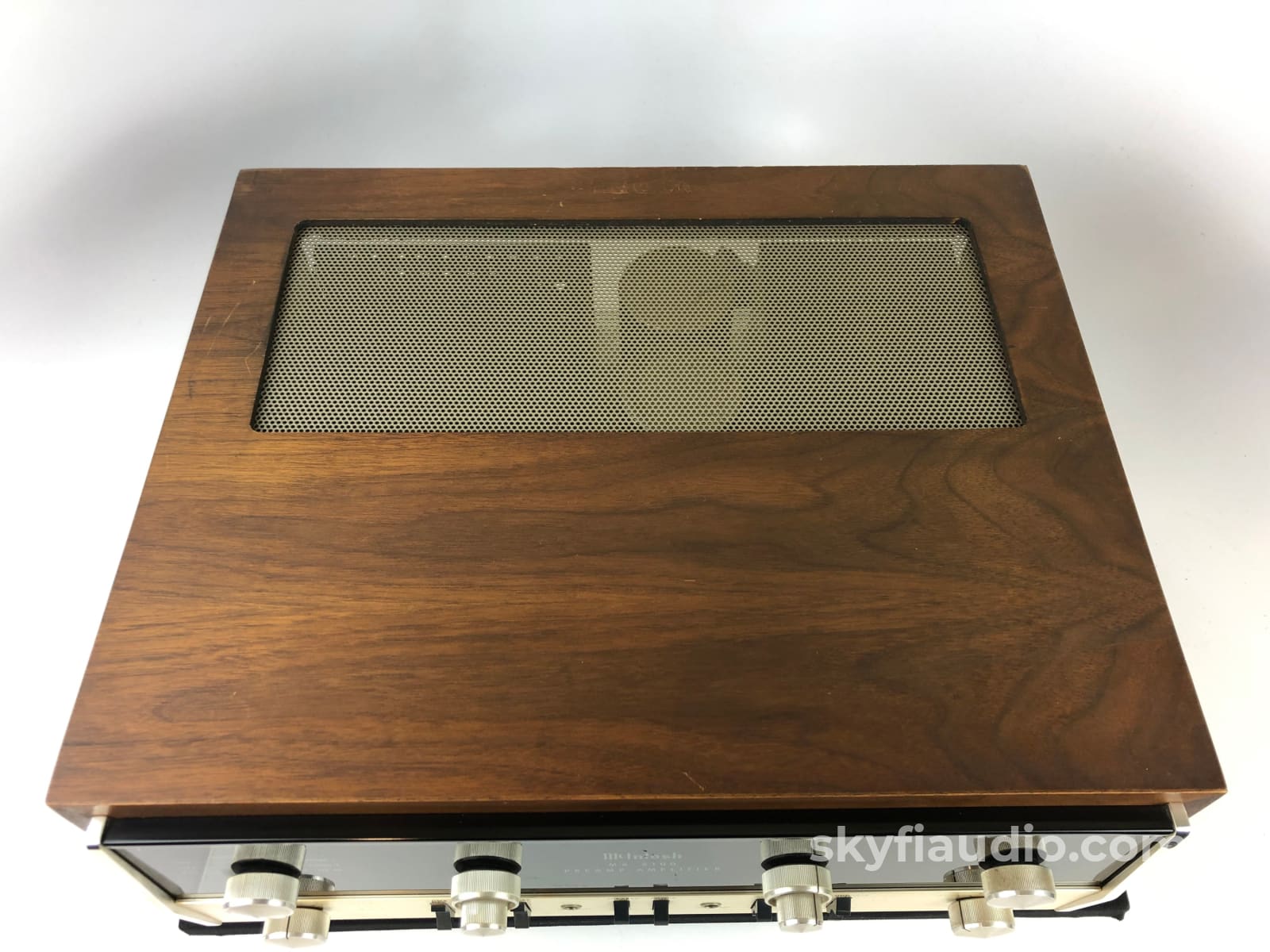
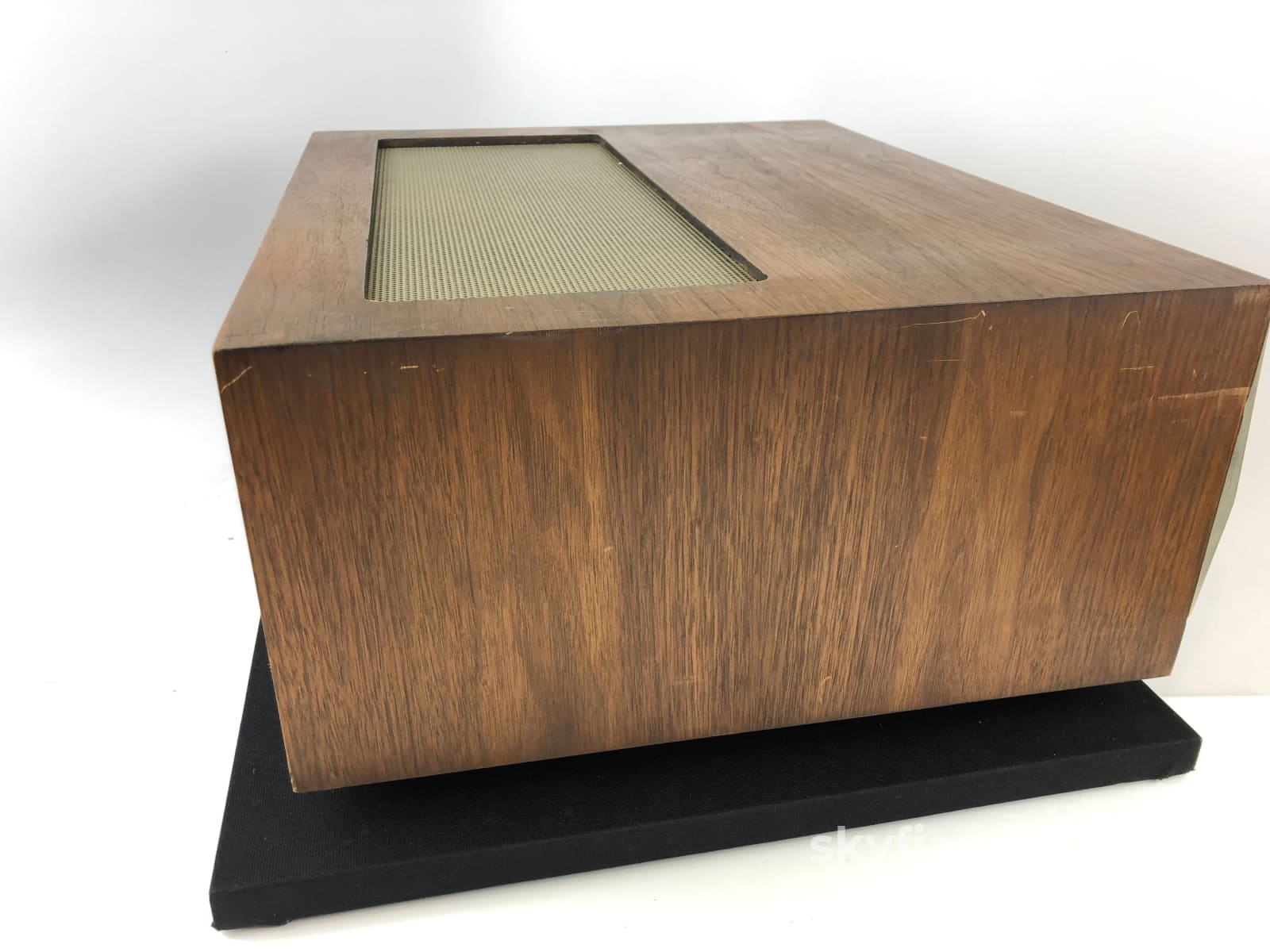


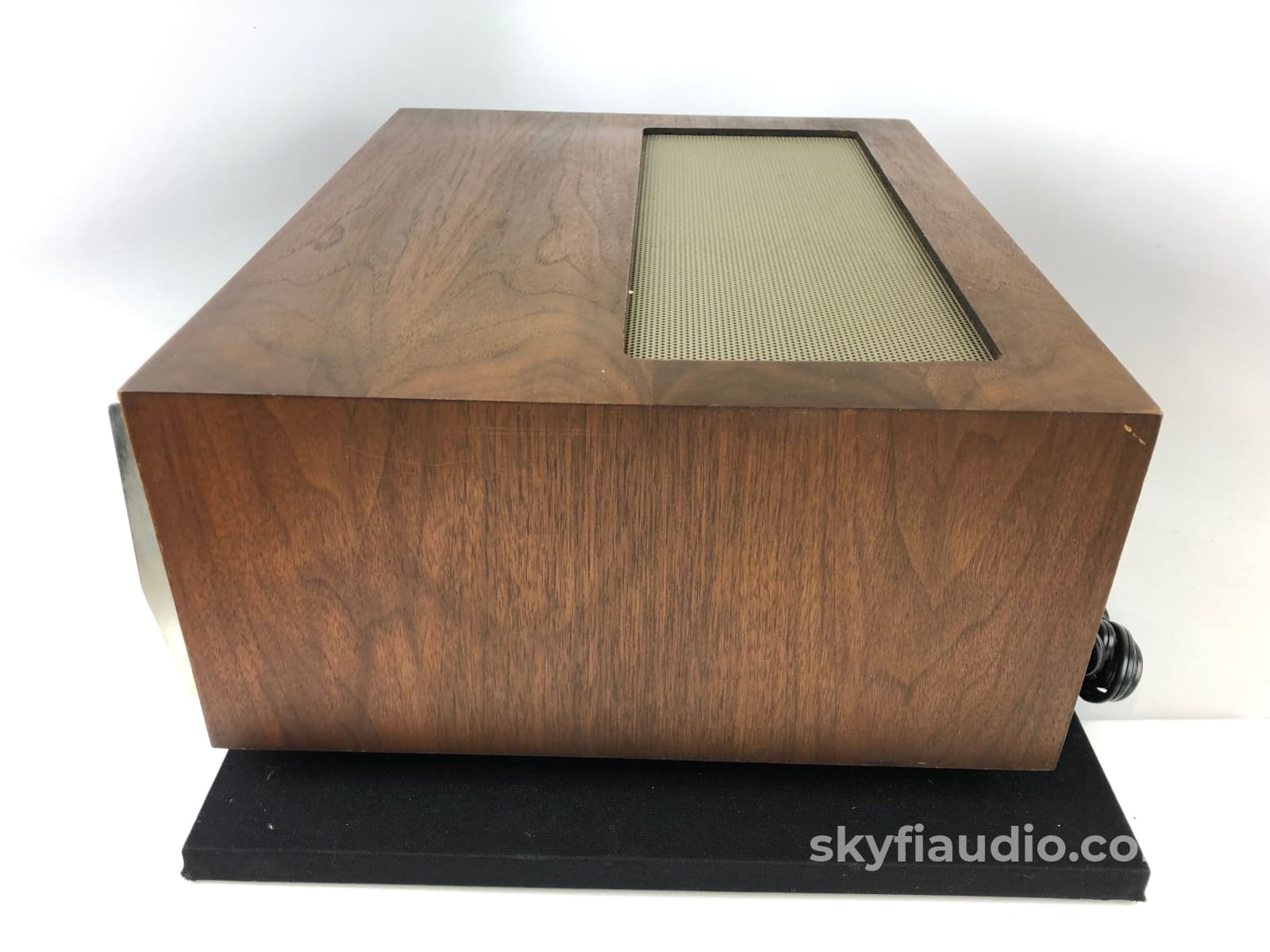
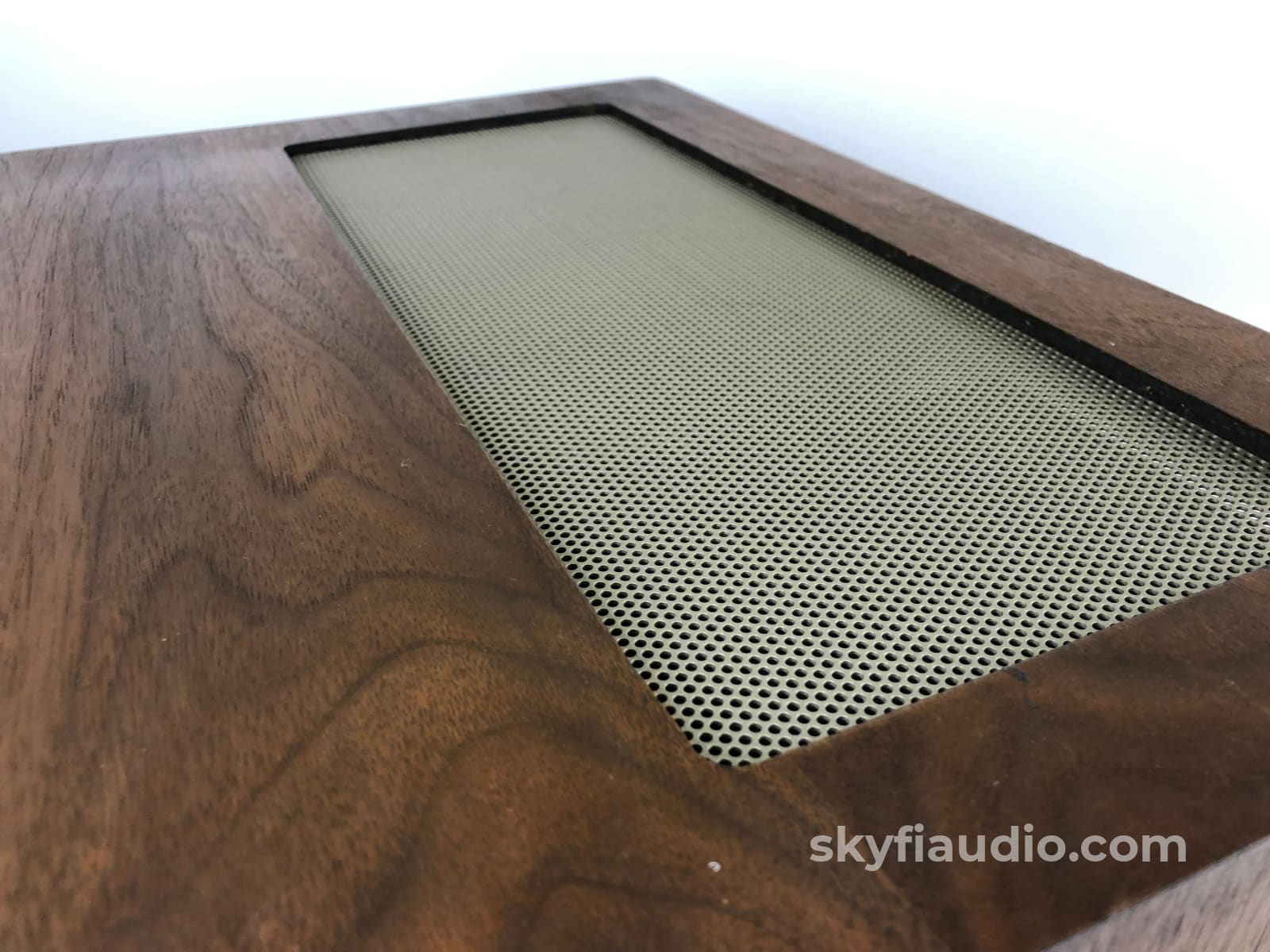
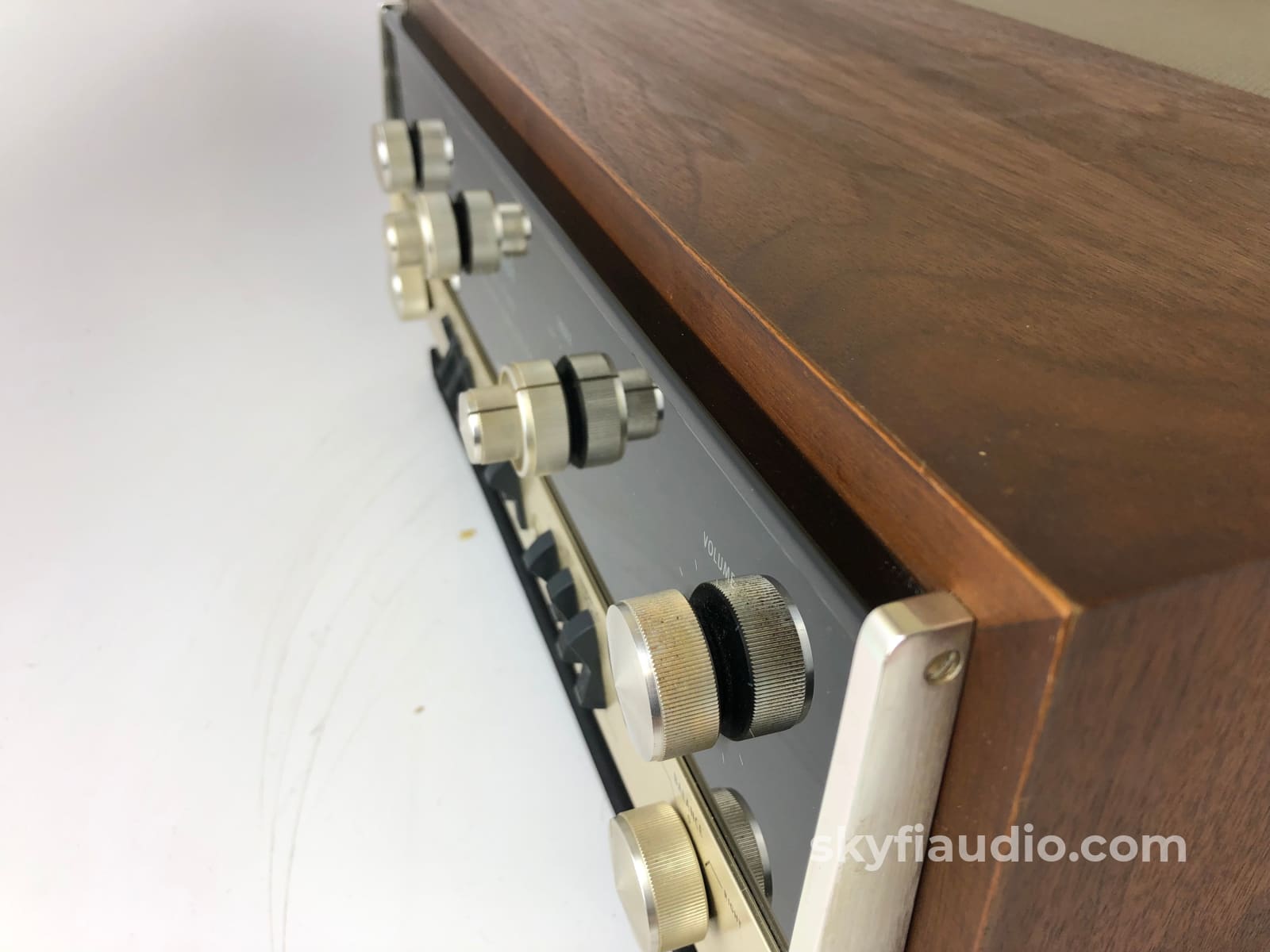

McIntosh MA-5100 Integrated Amplifier with Dual Phono Inputs and Case
Free Shipping on *ALL* Electronics (Excluding Speakers, Contiguous 48 US States Only)
Pickup currently unavailable at SkyFi 479

McIntosh MA-5100 Integrated Amplifier with Dual Phono Inputs and Case
SkyFi 479
479 South Broad Street
Glen Rock NJ 07452
United States
Integrated amplifier with original wooden case.
This is a true survivor and the highest quality MA-5100 you are likely to find on the market. It probably looks this way because it's a one owner piece that was kept in one single place for its lifetime.
The faceplate and glass are absolutely pristine. Removing the unit from the case reveals perfect chrome work and scratch free metal work.
We replaced the display bulbs and cleaned all moving parts for perfect operation.
Passed our bench test and is producing around 50W per channel, enough to drive most vintage speakers with authority and ease.
Priced according to condition.
Link to download manual: http://www.berners.ch/McIntosh/Downloads/MA5100_own.pdf
|
Item |
Included |
|
Original Box |
No |
|
Manual |
No |
|
Remote |
No |
|
Cables |
No |
|
Physical Condition |
9 |
|
Working Condition |
10 |
Technical Description
PREAMPLIFIER SECTION The phono and tape head preamplifier circuits in the MA 5100 have three transistors in each channel. The input selector switch connects the input jacks to the first voltage gain stage of the preamplifier. The input stage has high voltage gain and very low noise. The next stage, an emitter follower, acts as an impedance converter that matches the input stage to the second voltage amplifier. The emitter follower is direct coupled to the second voltage amplifier. Negative feedback is used around the low level section to reduce noise and distortion to an absolute minimum. The negative feedback also provides precise frequency compensation for magnetic phono cartridges and tape heads. The feedback remains in effect through the entire audio bandwidth, even at 20 Hz where gain is the highest.
This kind of careful Mclntosh engineering assures you of lowest distortion performance. The tape head input impedance is 500,000 ohms. High tape head impedance permits uniform high frequency performance from typical tape transport playback heads. The MA 5100 is ideal for tape recording. With an input signal from a phono cartridge of 10 millivolts, there is 1.4 volts available at the tape output jacks. Phono input signal overload is virtually impossible. At 1,000 Hz the phono input will accept greater than 125 millivolts without overloading. This is more than than 4 times the output from most phono cartridges when playing a low distortion phonograph record.
The phono input impedance is 47,000 ohms. This matches the impedance of magnetic cartridges. The preamplifier output is connected by the input selector switch to the tape output, the tape monitor switch, the balance control, the loudness compensation switch, and the first section of the volume control. This arrangement permits recording of the program without interruption and has the ability to monitor the recorded tape. The use of a two section volume control performs two important functions.
First, the input section of the volume control increases the signal handling capability of the tone control amplifier. Use of this arrangement makes overdriving the tone control amplifer almost impossible.
Second, the output volume control assures maximum signal to noise ratio regardless of the volume control position. The tone control stages are made up of a three stage amplifier. The first two transistors are emitter followers. The first emitter follower is driven from the output of the volume control. The second emitter follower is direct coupled to the third stage.
The third stage is a high gain voltage amplifier. Signals pass through the input emitter follower and then couple to the second and third tone control stages through the tone control network. The tone control contours are obtained by controlling the large negative feedback around the second and third transistors. This negative feedback is used to accurately shape the response.
The large amount of negative feedback also makes possible low distortion from the tone control amplifier. The output of the tone shaping amplifier drives the low frequency and high frequency filters and the second section of the volume control. The filters are designed to remove unwanted noises such as turntable rumble and record scratch. The filters remove the maximum amount of objectionable material and still have a minimum effect on the musical content of the program material. The output of the volume control is fed to a two stage voltage amplifier that has very low noise characteristics. Negative feedback is used to improve the signal to noise ratio and assure an absolute minimum of distortion.
The phase switch is part of the left channel circuit. The switch selects from two sources that are of equal amplitude but are "out of phase" to each other. In the normal position the phase is the same in both channels. When the phase switch is in the 180° position the left channel is "out of phase" when compared to the right. Out of phase program source material is easily corrected with the use of this switch.
Choose options














